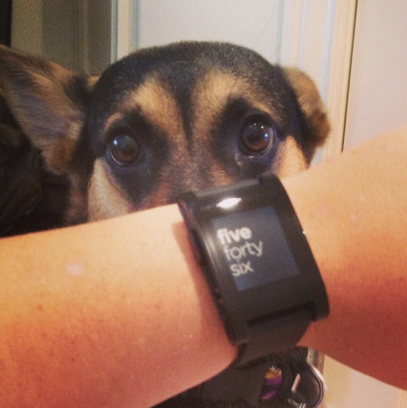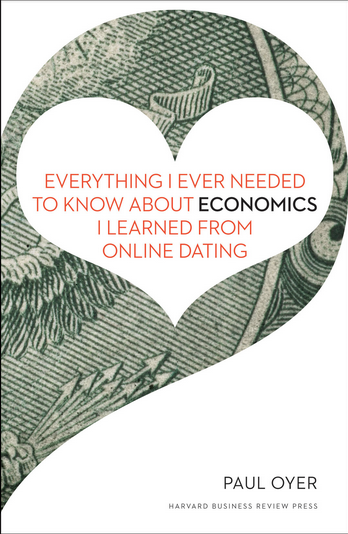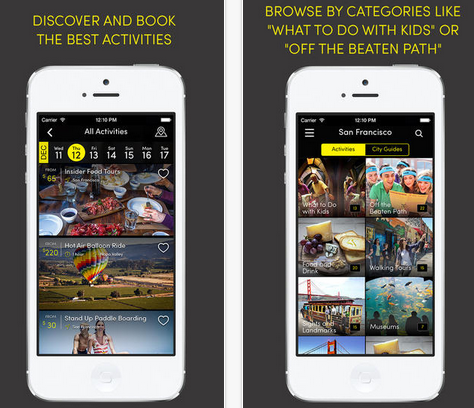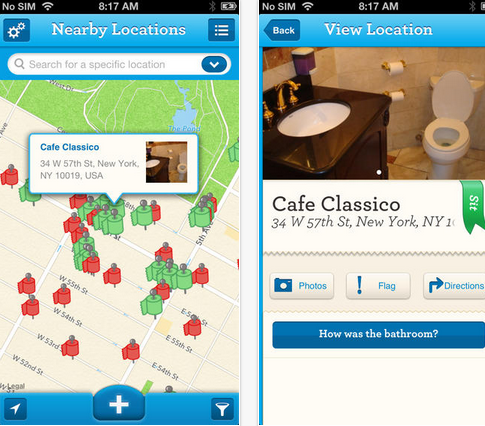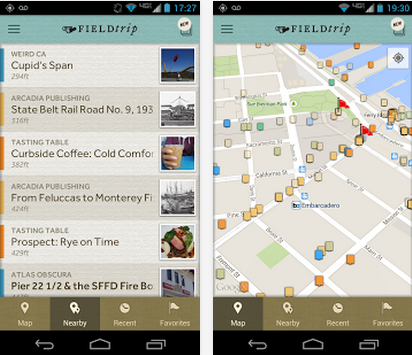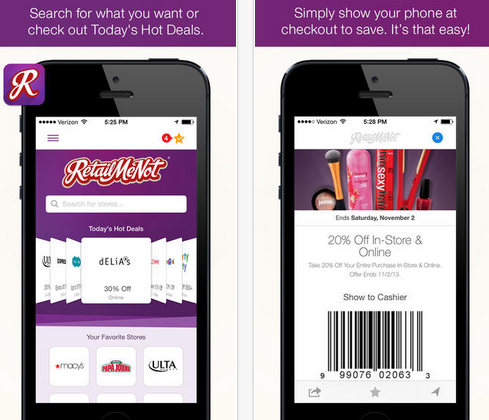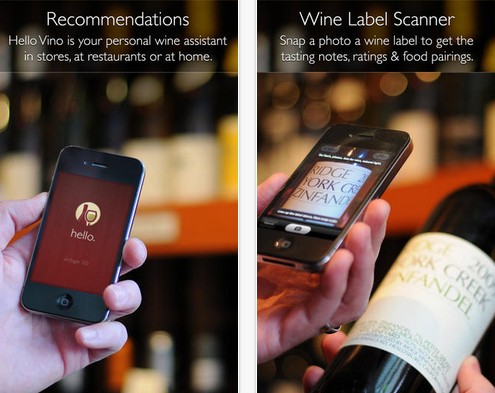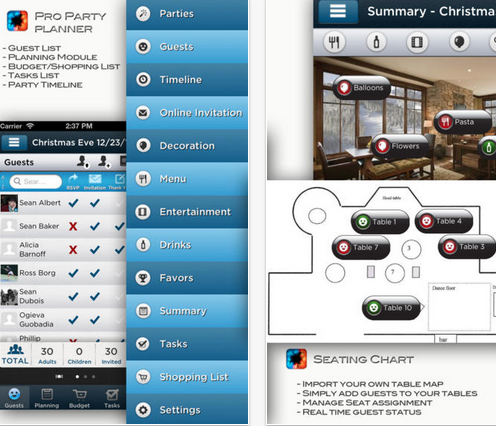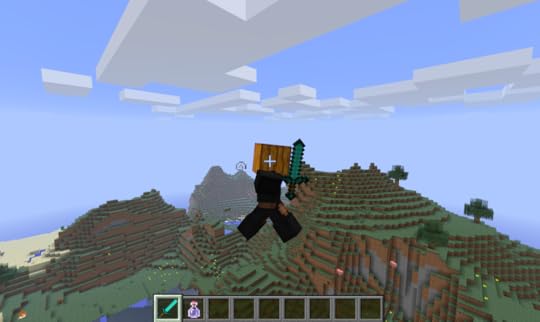Randi Zuckerberg's Blog, page 57
January 14, 2014
This Social Media Strategist Took A Month Off From Facebook– You Can Too!
What does it actually mean to take a break from social media? I hit a digital wall that forced me to take a much-needed break away from Facebook, and get some answers.
Last fall I felt a social media burnout coming on. I would go on Facebook and look up 20 minutes later with no real idea of what I was doing there. I felt overwhelmed by online “news” and sensed myself falling in a rut with my work, which was a little scary. I needed to shake things up, so I took a month off.
Making the break was not simple. I spend my days surrounded by and immersed social media, primarily Facebook. In 2009 I wrote my Master’s thesis on the implications of social media in the workplace, and I work as a social media strategist with a wide range of companies and organizations. I still had to work, but I also knew the timing was not going to get any better.
Since the holidays were coming I knew I could dial back my online time without raising too many eyebrows, and I have a separate account I use for business purposes, so I committed to not checking or updating my personal Facebook account for the month of December.
It was easier–and harder–to cut back then I realized. But it was such a valuable exercise I hope my tips and experience can help anyone else who needs to step back from the relentless Facebook cycle.
Be realistic.
I only gave up Facebook for a month, and even that was with some caveats. I lead weekly runs in San Francisco that are arranged via a Facebook Group, so I went on–briefly-–to make sure those were taken care of. I set a timer, addressed the business at hand, and logged out. I did not do anything during those times unrelated to the runs.
I also didn’t even try (or want to) give up all social networks. I’m planning my daughter’s first birthday and I spent a ton of time on Pinterest, tweeted as usual and even Instagram-ed. The goal was not to cut myself off completely, but rather to gain some perspective through separation.
Trust your network.
FOMO can be a mofo, but I quickly learned that if news appeared on Facebook that I really needed to know about, it would get to me in other ways. For example my brother had a scary flight experience on a trip to New York that he posted about on Facebook upon landing. My sister called to let me know what happened but that he was okay. I realized the important stuff would get to me no matter what, and the noise that comes with FOMO would stay filtered out.
Make it hard.
I deleted the Facebook apps from my phone, and turned off notifications. Facebook was often my default website when I was sitting staring at my computer, so I found other sides to replace that (and spent much less time at my computer as a result)! I also got a lot of writing done and moved other projects forward in tangible ways.
I also let a few friends know that I would be taking a break, so no one would freak out over my lack of updates. My husband jokingly asked if I was going to rush onto Facebook at 12:01 on January 1. It was actually January 2 before I returned, and since then I feel much more aware of my Facebook consumption.
I’ve gone on regularly, but I don’t feel sucked into a bottomless vortex of status updates. I see what’s happening, join in and then and step away refreshed, which is just what I was seeking. I’m looking forward to making this break a part of my annual rituals.
Lesly Simmons is a writer and social strategist in San Francisco. She runs Digital District, a social and design consultancy, and blogs about stroller-friendly restaurants and activities at Mama’s Guide. Follow her on Twitter @leslysimmons.



 by
by 
The post This Social Media Strategist Took A Month Off From Facebook– You Can Too! appeared first on Dot Complicated.
January 13, 2014
Is Tech Killing Your Favorite Children’s Book Characters?
“I loved the Berenstain Bears when I was a kid, too.” I told my five year-old daughter the other day as we sat watching the animated show together.
“Was it your favorite show?” she asked me.
“Actually, there wasn’t a show when I was little – they were only books.” I told her.
“Really?” she responded incredulously.
This feels like an all-too-common conversation between us, and a source of concern for me – both as a parent, a writer and a former English teacher. So many of the beloved children’s book characters that I discovered in my youth are now represented in shows and movies as both animated and “real life” characters. I worry that the opportunities that I had as a child to imagine how these characters looked, sounded, and felt to me was going to be taken from my both of my young children before they had the chance to experience the same joy and wonder that comes with getting to know these classic and wonderful members of the children’s literary canon.
Around every corner, there is another book with characters whom I felt like I knew personally – The Berenstain Bears, Corduroy, Matilda, James and the Giant Peach, Ramona Quimby, Winnie the Pooh– that are now available to children in 3D. They don’t have to imagine how they walk or talk, what their voices sound like, or how they interact with their friends and family – it’s all right there laid out in front of them on screens both big and small.
Now, I realize that I have the ability to choose what my children can and can’t see, but I also don’t want to be a reading and television dictator in that sense either. As much as I love reading, and desperately want to raise my children as voracious readers, I know what the world is now, and I – either selfishly or just realistically – need a break sometimes and appreciate the value of screen time for both myself and for my children. Both of my children are still in preschool age and aren’t yet experienced readers, so books are not a viable “quiet time” option just yet. Neither of them has the attention span to sit with what is essentially just a picture book from their perspective as pre-readers, for more than a few moments before becoming bored, but television – or one of the carefully curated apps my husband and I have chosen for them on our iPad – provides that much-needed opportunity for them to slow down.
They have both been introduced to revered fictional personalities such as the Cat in the Hat, Babar, and Curious George when I’ve read the books to them, but an occasional bedtime reading cannot compete with the PBS Kids app (which I think is phenomenal) where they can watch, interact, and play games with these beloved characters.
Those characters I discovered in books as a child were my friends in part because I was allowed to mold them into whatever my heart and mind wanted or needed them to be at that point in my life. These days, it seems as though the cart has been put before the horse in that sense – the majority of books are either based on characters that are already in television shows or movies, or that the turnaround from book-to-show is so quick, children don’t get to sit with and “get to know” their version of the character for very long before they’re being shown a director’s vision of it.
Will these high-tech introductions stifle or foster my children’s interest in these timeless characters?
Will they be robbed of having the same rich experience as readers that I did or will their experience be further enriched and enhanced by getting to know them a variety of formats – through books, videos and apps?
Is tech killing these beloved characters or bringing them to life even more richly for our children?
Here’s hoping that my little Sister Bear and Brother Bear get the best of both…
Posted on 1/13/2013
Jamie Krug is a writer and stay-at-home-mom with a full-time job as the CMO (Chief Medical Officer) of her family as well as a Huffington Post Contributor. She is the mother to an inquisitive daughter, Parker; and the mischievous-grinned Owen. Her blog www.OurStrokeOfLuck.net tells the story of her family’s day-to-day struggles and triumphs in the wake of the devastating and still largely misunderstood rare diagnosis her son received at birth. She prides (embarrasses?) herself by stating out loud what other mothers may feel but wouldn’t dare say… You can follow Jamie on Facebook, Instagram, and Twitter.



 by
by 
The post Is Tech Killing Your Favorite Children’s Book Characters? appeared first on Dot Complicated.
What Gadgets Will The Next 10 Years Bring?
A month ago I attended the European tech conference, LeWeb Paris, the theme of which was “The Next 10 Years.” This got me thinking about what the past 10 years of technology has been like, and boy was it like peering into a strange museum of the rapid progression of human behavior. Remember when everyone HAD to have the Razr phone? When you expressed all your deepest feelings through LiveJournal? Or when you couldn’t live another day without a Snorkel FM radio?
Okay maybe not that last one. But you get my point. It’s weird to think those gadgets, which we coveted so badly, seem like children’s toys 10 years later. The scary part of that is, by that logic, the top of the line, state of the art, pride-of-the-early-adopter technological devices that we love right now will be equally laughable in another decade.
So at LeWeb, I had a chance to glimpse what experts believe will be the tech trends to watch out for over the next ten years (until they become obselete), and fortunately it does not include this:
At least not yet, anyway. The next 50 years is still up for debate.
What we can be sure of is that the next ten years will bring us a greater emphasis on technologies that help us to convert everyday activities into meaningful data. This comes in the form of biometric devices like Fitbit, and machines and software that allow us to design and create anything we want via 3D Printing.
As we outfit our bodies with wearables like Bluetooth enabled watches and Internet-accessible eyewear we will bring that approach into our home, wiring our houses to be “smart,” with things like alarm systems and heaters accessible remotely via mobile phone apps.
Of course, I’m personally abstaining from Google Glass, and the eventual Apple alternative (which I predict will simply be called: “i”), for the time being because it’s only a short time until such technology is either in contact lens form, or even implanted directly into the eye, so why spend the money now?
In all seriousness, the next 10 years will bring us many of the things I’ve mentioned, and lots more surprises, too. The recent boom in innovation is only set to grow, and with the resources available to entrepreneurs these days there’s no telling which products will be flooding the marketplace next. And as these technologies develop, we will have to place a greater emphasis on balancing these conveniences with the basic needs of humanity, such as eating and affection.
So while we wait to see what that will be like, you might as well cozy up to your favorite brand new gadget, because in only ten short years it’s going to be the laughing stock of Future You.
Posted on 1/13/2013
According to her mother, “Silicon” Ali is a modern Renaissance woman, with interests ranging from cartography to terrarium architecture. She works as a Marketing Communications Manager at Autodesk, and in her spare time you can find her traveling the world, giving tours of San Francisco, or cuddling with puppies.



 by
by 
The post What Gadgets Will The Next 10 Years Bring? appeared first on Dot Complicated.
January 12, 2014
How Economics Can Find You Love: Interview With Paul Oyer
After twenty years of marriage, Stanford economist Paul Oyer found himself newly single, and waiting at a café for his first “first date” in decades—a match that was made over the Internet. As he went on more dates over time, Oyer found himself drawing comparisons between the online dating market and the business markets he studied every day. Below, he shares with us his insights on modern romance from his book, Everything I Ever Needed to Know About Economics I Learned from Online Dating.
1. How did your knowledge of economics shape your own approach in the online dating scene?
Let me give you a couple of simple examples. First, I looked for “thick” markets by choosing relatively large websites with lots of people. It’s pretty simple — the more people out there, the more likely there will be some who will be a good fit. Second, I was careful and skeptical because people on dating markets have incentives to exaggerate their attributes. The evidence of lying on dating sites is overwhelming and it’s all very rational from an economics perspective.
2. The number of online dating sites and profiles out there makes it look like there’s plenty of fish in the sea. Is there such a thing as finding the perfect match if you search long enough?
When it comes to finding “the one,” I’m afraid I favor realism over fairy tales. It is important to have realistic expectations. A person could spend his or her whole life looking for a perfect mate. But you have to remember that (as we economists would say) your utility will be maximized if you stop searching when the benefits of finding a better match no longer outweigh the costs of spending time searching. “Settling” sounds depressing, but it is efficient. Sure, looking at another profile could lead you to a better match. But it probably won’t and, in the meantime, you will have used up some of your most precious of all economic resources — time.
Or, to put this in terms closer to my background as a labor economist, remember that people who are too picky about what jobs they will accept and firms that are too picky about who they hire are important contributing factors to unemployment. By the same token, people who are too picky when choosing a partner end up lonely or, as I like to refer to it, “romantically unemployed.”
3. A lot of people prefer a safe first date- coffee, for example. Why do you suggest expensive first dates?
If you want to credibly signal to someone that you have a lot of money, then you need to spend a lot on your first date. I guess you can burn a pile of money or show your date your tax return, as I suggest in the book, but those ideas are not very socially acceptable.
Having said that, I never did spend much on the first date because I did not want to show off my income. I was more of a cup of coffee type of guy and I was looking for those few women who thought economics professors were cool.
4. What is the biggest online dating mistake you see people make today?
People who don’t proofread their profiles always bother me, but that is more of a pet peeve than a big mistake. I think the biggest mistake is being afraid to plunge into the online dating world. There are a lot of people who are overly romantic about meeting people the old-fashioned way or who are worried about “creeps” online. But the thick market for partners is online. So remember — you can’t succeed in the market if you don’t get into the market. Take a chance and enjoy yourself!
5. Where can our audience learn more about your work?
Amazon reviews and information
Recent appearance on Bloomberg TV:
What do you think about the competitive online dating market? Tell us in the comments below!
Posted on 1/12/2014



 by
by 
The post How Economics Can Find You Love: Interview With Paul Oyer appeared first on Dot Complicated.
January 11, 2014
12 Apps You May Have Missed In 2013
2013 flew by, and already blogs and sites are reporting on what’s new for 2014: new technology, new trends and new apps. But let’s take a step back and review some of the awesome apps and online services from 2013 that you might have missed.
1) Peek.com is the innovative one-stop shop for travelers and locals to easily book amazing activities. The site and accompanying mobile app features thousands of hand-picked activities, curated by travel experts who are passionate about creating incredible experiences. It’s now in 17 US cities, London, and Paris.
Some unique functions include:
New personality quiz to tailor unique activities suggestions to each user
Geo-location technology, so users can book activities on the go, in real time
Ability to browse activities based on personality, category, points of interest, or location
Activities spanning and searchable by a variety of categories, including family friendly, arts & culture, food & wine, sights, walking tours, adventurous & more
Makes it easy to explore a new city with the kids, search for affordable experiences, discover something new in your home town & more
2) Sit or Squat indicates the closest clean bathroom and lets you rate public bathrooms after using them.
This app has a very simple purpose, but when you need it, it’s the most useful tool in your phone. If you can hold it, you can make it to the nicest one, otherwise just head to the closest Afterwards, rate the bathroom for others to see! Options include clean, awesome, stylish or interesting (and of course, whether you chose to sit or squat).
3) Ski Tracks ($0.99, iPhone and Android) uses your phone’s GPS to provide a data-filled snapshot of your day on the slopes, logging the steepest slope you rode to your maximum speed. Like Strava does for runners and cyclists, Ski Tracks uses your phone’s GPS to give you a snapshot of your day. It logs the angle of the steepest slope you rode, the amount of vertical you skied, and your max and average speed, among other things.
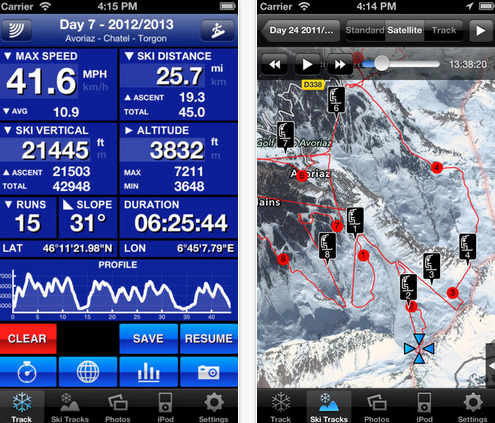
4) Pickie Gifts makes shopping for gifts easier with social graph suggestions. Pickie’s Best Gift Giver tool suggests a few intelligent gift ideas based on a person’s Facebook Likes in a special catalog you can click through. In our test, the tool was spot-on with its gift suggestions for our friends.
5) PayPal Mobile lets you easily pay and request payment from friends and contacts, making splitting up group dinners or handling roommate payments a cinch. You can also quickly pay in a wide variety of stores without your wallet and order and pay for food on the go– no waiting in line when you get there.

6) Field Trip from Google runs in the background on your smartphone, and a card pops up with information when you are driving near a local attraction that’s cool or interesting. You can pre-select your interests, and the app may notify you about a nearby historic golf course, a Civil War battlefield or a restaurant. Field Trip will also help you when you aren’t in the car. You can get directions to the attraction by car, walking or using mass transit. Expect a lot of reviews by Google-owned Zagat. Unlike Roadtrippers, the attractions in Field Trip tend to be on the beaten track.
7) RetailMeNot is one of the top-rated couponing/shopping apps. This app lets you search for coupons from your favorite stores, so you can instantly save 10%, 20% or even more on a single item or your entire shopping cart. You can scroll through the list of hot deals on the homepage or search for a specific store. You can add your favorite stores to a list to see the deals more quickly. The app uses the phone’s location information to narrow the deals to the ones near you.
8) Hello Vino is a wine pairing app that advises wine lovers what to pair with meals or makes suggestions based on the occasion. If you’re cooking up fancy meats, vegetable or pasta dishes, you might as well take the meal to the next level by pairing entrees with wine. You can also scan a wine label to help yourself remember it later (which, let’s be honest, you might need to do after enjoying a bottle or two).
9) The SaleSorter app (free, iOS) uses your smartphone’s location to show which discounts are currently available at your local stores. Before getting in line, it’s helpful to determine which stores have the best deals. You could easily see that right now, Anthropologie is 20% off, but Macy’s is selling items up to 50%. SaleSorter uses a map to show you where the deals are. It also includes store hours and contact info. Call and see how the lines are, before you make the trek to the mall.
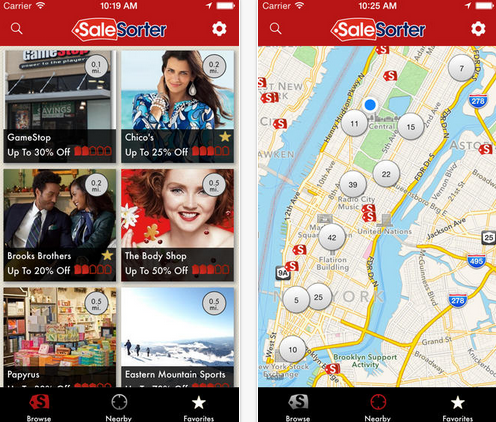
10) Instead (free, iOS and Android) is a nonprofit app that encourages users to live below their means and donate the extra money. Rather than buy a cup of coffee, make your own at home and donate that money you would have spent to one of the charities listed in the app. The app will keep track of the organizations you’ve made donations to as well as the total amount you’ve donated to all charities through the app.
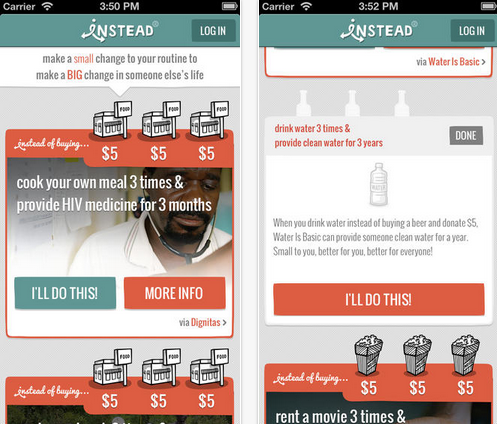
11) JetLag Genie ($2.99, iOS) helps you get ready for a big trip. It’s generally agreed that gradually altering your sleeping habits before a trip is beneficial, and this clever app will help you do just that. Input your travel dates, destination and usual sleeping times and it’ll come back with personalized alarm clocks to soften the blow when you wake up on Tuesday afternoon convinced it’s still Monday morning.
12) Pro Party Planner ($4.99, iOS) is all-in-one taskmaster app that helps you conveniently organize all aspects of your event from beginning to end, complete with reminders. Pro Party Planner covers everything on your party-planning list, including: invitations, menus, budgets, seating charts (but who needs those?), entertainment, decorations, favors, shopping, guest lists and more. The augmented reality-enabled app’s party timeline feature helps keep you on-track and on-task through every step. It even reminds you when it’s time to pick up ice to stash those all-important beverages in.
You can also SMS message your guests with important information, like driving directions and last-minute changes. Bonus: Pro Party Planner plays nicely with Google Docs, Excel and Facebook.
Posted on 1/11/2014
Written by Liz Wassmann and Ashmi Pathela
Disclosure: PayPal is the presenting partner of the DotComplicated book tour



 by
by 
The post 12 Apps You May Have Missed In 2013 appeared first on Dot Complicated.
January 10, 2014
Parenting The Advanced Minecrafter
Minecraft has taken the world by storm, and kids can remain obsessed with it for months or even years. If you have already successfully navigated the first few months of Minecraft with your kids, your children might be ready to take advantage of some of the more advanced opportunities and features of Minecraft.
An amazing thing is that they can learn a wide range of college-level skills while doing so—and they will be begging for more!
Circuit Design: Electrical Engineering 101
Most advanced Minecrafters have transitioned from the tablet version to the PC version. The PC version has capabilities that inspire a great deal of engineering creativity. It allows the players to use “redstone circuits” that can be used to create electrical wiring for lighting virtual houses or powering.
The system also includes basic circuit functionality like logic gates, clocks, memory, and mechanisms for moving things or taking other actions. This allows the kids to build more complicated creations such as combination locks, traps, and so on. Many of the creations are things that I only learned how to make in my college electrical engineering course on circuit design!
Some kids have created their own YouTube personas (such as “Admiral Redstone”) to showcase their creations and give instructions, so that kids can research possible ideas and learn to make creations on the web. They don’t even realize this is advanced educational material. They just know they secured their storage chest with a code, or made a zombie trap, which is very cool!

Mods: A Motivation to Learn Java
Minecraft allows anyone to take the code and modify parts of it. The new code is called a “mod.” Minecraft-obsessed children are very interested in having new or different materials, or meeting novel creatures, and mods open up this possibility. The desire to write mods can be a powerful motivator to learn Java. It is actually not very difficult to write simple mods because only a few lines of code need to be changed to change the game slightly.
However, the world of mods may introduce a lot of demands for parent time to help as well as frustration for both kids and adults. Before writing or editing mods, kids will start by downloading mods others have written. Since mods are user-generated, there is no guarantee that they work.
Downloading and installing them requires multiple steps, and different mods can be installed on top of one another, but they are not always compatible with one another. There is no pretty user interface to guide you. We experienced a fairly high percentage failure, especially early on, and it took some time for my 9-year-old to learn the steps (I didn’t even try with the 7-year-old). If the mods don’t work, it is necessary to restore a backup, or reinstall the game and start from scratch if the backup was forgotten.
In addition, the mods are posted on websites that are almost always ad-funded. The advertising typically includes banner ads flashing “Download! Download!” Even if you avoid the misleading banners and hit the correct download link, you typically pull up a popup ad and have to wait for it to disappear (15 seconds or so). If you click too soon, official-looking menus appear that ask you to install software, and before you know it, your search defaults have been changed, new toolbars are installed on your browser, and multiple other adware programs have appeared on your computer. I don’t know whether these programs are benign or whether they contain true malware. Even after reviewing everything with my son, I still came back a few times to find adware on the computer. What that means in practice is that installing mods safely requires close supervision until children are fairly sophisticated computer users (probably middle school or above). Even a reasonably savvy adult can get confused.
Minecraft as an Educational Tool
My son first encountered Minecraft in a summer camp for computer programming. When I first heard he was playing “video games” at camp, I was a little annoyed! But Minecraft is used as an educational tool across the country. Many technology-themed camps, such as Internal Drive, offer weeklong programs dedicated solely to Minecraft. Given the complexities of the game and the technology, many parents might be relieved to find someone else to teach these skills to their kids. I found that my son took the initiative to do much more ambitious projects in Minecraft after the camp was over.
3D Design and Printing
A less well known opportunity for creativity is the ability to use Minecraft as 3D design software, for 3D printing. A 3D printer (such as the Makerbot Replicator series) makes a real-life three-dimensional object from a computer-generated design. There are services such as Minetoys, which allows the Minecraft-obsessed child to order a full color replica of their own Minecraft avatar (at a cost of about $20) to be 3D printed by a mail-order 3D printing service such as Shapeways. It takes a few weeks to arrive, so if you want it for a gift, you must plan ahead! There are also services such as Mineways or Minecraft.Print() that allow you to order 3D prints of buildings or structures created in Minecraft.
There is public server, Printcraft.org, which allows you to create items for printing and export them with the push of a single button—this children can do on their own. The creations can either be ordered on Shapeways or another public 3D printing service, or else printed on a home or work 3D printer if you have access to one. A few cities also have 3D printing cooperatives like the “Tech Shop” where you can go to print 3D designs.
I introduced my kids to 3D design programs for 3D printing (such as the 123D series from Autodesk) after they were already deep into Minecraft. They picked up the other programs immediately. So you can think of Minecraft as a great introduction to Computer Aided Design (CAD) software!
Kids may get motivated to host their own servers. This may require a computer-savvy adult to help deal with firewall settings to allow friends to join over the internet. It also requires a computer that can be left on for people to join remotely, with enough memory and processing power to support multiple players at once.
Another option is to rent a hosted server from a service. Then the computer and software are maintained by the service, for a monthly fee. There is a web interface for keeping the game up to date and making choices about how the game works, as well as who can be admitted to the server. It can cost $8-$15/month to do this.
Hosting a server gives kids the chance to make choices, enforce rules with other players, and generally be a leader. The “op” for the server has special powers and can create things for the other players.
Hosting also comes with responsibility. I created an email to my kids’ friends and their parents stating the rules of the server (reminding children not to “grief” and destroy other kids’ creations) and explaining that it is private and only invited friends can play.
Social/Emotional Skills
Advanced Minecrafting has a large social component. The kids collaborate on creations like roller coasters, create games and puzzles for their friends, and give each other gifts. The kids learn from the work of others posted on the internet, and may be motivated to post their own work to the public as well. They need to set and enforce rules, and work out conflicts. There have definitely been tears in my house along the way, as well as numerous incidents of theft and destruction of virtual goods and creations, both intentional and accidental. But I’ve been surprised and pleased at how well my children and their friends have learned to navigate the environment, and how savvy they’ve become along the way. The younger ones often rise to the occasion.
The world of Minecraft provides a relatively safe environment to introduce the potential risks of social interaction over the internet. It’s been very important for me to keep a close eye on what is happening, but I’ve also been pleased at how much responsibility my children have learned to take towards avoiding problems and respecting boundaries. Maybe they’ve grown mature, but I’m sure a big part of their good behavior stems from the fact that the threat of losing Minecraft time is the strongest possible motivator to follow the rules!
Links:
Offical minecraft site:
Redstone circuits:
http://www.minecraftopia.com/minecraft_redstone
http://minecraft.gamepedia.com/Redstone_circuit
http://minecraft.wikia.com/wiki/Redstone_Circuits
http://www.youtube.com/user/AdmiralRedstone
3D printing:
http://www.minecraftprint.com/
http://www.printcraft.org/getstarted
http://www.realtimerendering.com/erich/minecraft/public/mineways/
http://www.techshop.ws/3_D_Printing.html
Internal Drive camp:
Posted on 1/10/2014
Susan Athey is an economics professor at Stanford Graduate School of Business, where her research and teaching focus on the economics of the internet, online advertising and news media, and the statistical analysis of big data. In 2006 she became the first woman to win the John Bates Clark Medal for the best American economist under the age of 40. She was inducted into the National Academy of Science in 2013. She is a long-term consultant to Microsoft, and also advises a few technology startups. She lives in Palo Alto, California with her husband and three young children. She loves sharing her passion for technology with kids, while navigating all of the challenges that creates.



 by
by 
The post Parenting The Advanced Minecrafter appeared first on Dot Complicated.
January 9, 2014
Mental Tips To Lift You Out Of The Post-Holiday Blues
The first Monday after the holiday break is always hard. Going back to work, school, your routine, carpooling, and doing all that laundry you’ve let accumulate while you spent a few days in pajamas really isn’t a fun start to the New Year. There is no smooth way to ease into it. You are quickly thrust into the throws of obligation while the thoughts of the holidays, relaxation and family time rapidly dissipate from your memory.
The good news is that everyone experiences this. The collective dread and Facebook postings reflecting this harsh reentry should at least provide some comfort knowing you’re not alone.
Though many mothers are ready to get their kids back to school and out of their hair, it is always bittersweet because of all the scheduling and to-dos that comes with it. Along with the masses, I started off my New Year with a super busy Monday. I had so much to do and not much time to get it done and though I really try not to multitask (it’s kind of the enemy), I had succumb to doing too many things at once. I had a 10am meeting with a new client and before getting there, had to take the kids to school, go food shopping, and bake some banana chocolate chip muffins for belated holiday gifts for my masseuse and web developer I was seeing later that day.
Feeling like a whirling dervish in my kitchen putting groceries away and scrambling to make the muffins, I pulled my plastic sugar container out of the cupboard and with a moment of premonition I told myself that I’d better slow down otherwise I was going to drop the sugar.
Sure enough, I dropped the container, breaking it, causing sugar to spill out and ooze all over the floor. I really had no time for this. Feeling super frustrated, I took a deep breath and laughed as I said out loud that there was no use crying over spilled sugar. I cleaned it up, told myself to slow down and be present, and proceeded to get the muffins in the oven and got out the door only 10 minutes late to my appointment.
I was meeting new clients at Peet’s Coffee to grab a coffee (tea for me) and discuss doing mindfulness work with their son. As I finished preparing my tea with my Stevia and half and half, I was grateful to finally be sitting down. I lifted the cup to take my first sip and as I brought it to my lips, a huge amount of hot tea proceeded to pour straight down my V-neck sweater, through to my tank top and burning my skin. Tea is really hot!! Once again, I was reminded that when I’m being mindless, my mind is like a monkey jumping from one thing to the next and it is near impossible to pay attention to what is in front of me. Had I been more mindful, I would have noticed that the top of my cup was not on all the way, which is what caused me to ruin my outfit, get burned and feel impish in front of these parents.
Life constantly presents us with challenges; this is a simple fact. The question remains: how are you going to respond to whatever is arising in the moment? You always have a choice: when the going gets tough, are you going to throw in the towel and give up? Or are you going to breathe and acknowledge that some days are just like this?
My favorite book as a kid was Alexander and the Terrible, Horrible, No Good, Very Bad Day by Judith Viorst; in fact I used to have the whole thing memorized! I now realize that the book’s message is really about mindfulness. It is learning to give space for whatever is going to arise and acknowledging it, without letting it take over and control you. This also requires faith and knowledge that this too shall pass and tomorrow is another day. Alexander thinks that if he just moves to Australia everything would be all better, but as his mother points out, “…some days are like this. Even in Australia.”
Mindfulness provides us the tools to skillfully manage through difficult moments. Cultivating this practice teaches us to slow down, allow our attention of mind to rest in the present moment, and breathe. When we can practice giving space for whatever is arising to exist without judgment, and nurture ourselves with self-compassion, we are better skilled at becoming Teflon rather than being Velcro. It is always a choice to choose to let things go rather than hold on and get stuck in negativity.
As in the case with my spilt sugar and tea-stained shirt, I chose to be Teflon, took some deep mindful breaths, gave myself compassion and moved on. Beating myself up for my carelessness would have only lingered on throughout my day and put me in a bad mood, potentially ruining my subsequent massage. As soon as I let it all go, I was even able to laugh at just how much I put my practice into use and what better example could I offer my new client than to show them how to apply mindfulness to any situation? This was just my Monday morning and all these mishaps could happen to anyone…even in Australia.
Posted on 1/9/2013
Joree Rosenblatt has a Master’s in Counseling Psychology and is a mindfulness educator in the Bay Area. In addition to working at a K-8 private school teaching mindfulness to students, she teaches her original curriculum to adults, and onsite in corporations, in the Fundamentals of Mindfulness and Mindful Parenting. Joree’s true passion is raising her two daughters, mindfully of course…well, most of the time! Even though she already is a rock star mom, Joree practices mindfulness every day, and when all else fails, she remembers to take a moment and just breathe.



 by
by 
The post Mental Tips To Lift You Out Of The Post-Holiday Blues appeared first on Dot Complicated.
January 8, 2014
5 Tech-Inspired Jewelry Picks
Can’t get enough tech in your life? Check out these tongue-in-cheek jewelry picks guaranteed to add a little whimsy to any outfit. Dare we say geek chic?
1. The Power Button Ring and Computer Lover necklace, both from Smiling Silver Smith.
2. The Pi Necklace from RGB Laboratory. Fun, quirky, and a great way to remember all those digits.
3. The ASCII heart necklace is a sweet, subtle way to show love. Available on etsy.
4. Mario and Luigi Best Friends Rings. Way too cute not to share. Available on etsy.
5. Brick and Choose Tetris-inspired earrings from ModCloth.
Posted on 1/8/2014



 by
by 
The post 5 Tech-Inspired Jewelry Picks appeared first on Dot Complicated.
A Parent’s Guide To Minecraft
It’s 7:15 on Saturday morning. Sounds are coming out of the computer room in my house where my 7 and 9 year old children are playing. “Hey-Snebmi- /tp me! You’re an op, teleport me to the castle!”
“Look, Atti just logged on.” Then there’s the familiar sound of an incoming Skype call. “Frank, let me show you the new hotel I built! I made a room for you, it is right under my command room. Your room is made out of wood and it has a floor of ice. I made you a balcony with glass!”
Saturday morning Minecraft is in full swing. The kids are playing together on a server I set up, avatars interacting with one another. The two computers in our office each have Skype sessions to different kids, including teenage cousins in a small town in the north of Holland. A third line is open on speakerphone, and walking in, it is hard to keep all the voices and chatter straight. Kids are building, destroying, blowing up TNT, killing virtual sheep and zombies, all in a virtual world. Mostly the conversation is exuberant, but there is the occasional cry of frustration. “Hey, no putting fireworks in my fortress!” “You stole my only diamond, I was saving up to make a diamond sword!” Somehow, the kids seem to work out most of their conflicts.
Minecraft is much more than your ordinary computer game. It’s virtual lego on steroids. It’s 3D design with virtual electronic circuitry. It’s an open source program where kids can create “mods” that modify the game and share their code with other players. It’s a community, complete with kid-created YouTube how-to videos, Minecraft parodies of popular songs, and ad-funded blogs created by teens. It’s an obsession. As a social game and an online experience, it creates numerous challenges for parents trying to figure out what is safe, appropriate and educational in the world of Minecraft.
Minecraft on Tablets
Most younger children come to Minecraft through tablet versions, on iOS and Android. When played in “creative” mode, it is like virtual Legos from the days before kits. Children create amazing 3D structures, and they get an unlimited supply of the resources they need to build. Relative to Lego, they can construct more complex structures with much less dexterity and patience. Without an instruction book, it is open-ended design that encourages the imagination.
Moving into “survival” mode on the tablet version, the game can become more frustrating for early elementary kids but also more exciting for tweens. The characters need sleep and food to survive, so they farm and hunt. Sometimes it rains and storms, unleashing hostile creatures. Zombies attack, and the kids battle them with swords.
When my children discovered that they could play multi-player Minecraft on tablets, a whole new world opened up. As long as all devices are on the same local area network (e.g. the WiFi network in your home), they can join the same “world” and interact with one another. They collaborate on buildings, but can also steal things from each others’ “chests” or destroy their carefully crafted creations. Kids get exuberant but occasionally frustrated too.
Minecraft Media and Internet Exploration
At school, my kids started hearing about great YouTube channels for watching Minecraft videos. Kids give a voice-over while demonstrating features or creations on Minecraft. The problem here is that many of these videos are narrated by foul-mouthed teenagers. Beyond just profanity, the voice-over can be misogynistic. I discovered this the hard way when my son was home sick and I let him play Minecraft while I took confererence calls. I checked in, and was more than a little shocked at the words coming out of the iPad! After that, my kids could only watch YouTube Minecraft videos with the sound off.
There are also YouTube videos of Minecraft-themed parodies of popular songs. Most of the parodies I have heard are pretty harmless, but the original lyrics can be offensive, and if your kids start searching for them, you never know what might turn up. On the plus side, my son and their friends made a terrific parody of their own for Mother’s Day—so Minecraft even inspired literary creativity!
Minecraft on PCs
The decision to move to the PC versions of the game—available on Windows and Macintosh—is a significant one. New possibilities and new pitfalls emerge. First of all, unlike the tablet version, you have to pay about $28 to get a Minecraft account (and choose the username carefully, as it is used in the game and you can’t change it!). If kids want to play on the same server simultaneously, you need one account per child.
Using the PC version, you can join public or private servers over the internet—opening the door to the kind of group Minecraft sessions we have on Saturday mornings. Setting up a private Minecraft server takes some work and computer savvy, as well as a computer you don’t mind leaving on for the kids to use. It also involves changing firewall settings. An easier but more expensive option is to rent a server from a hosting company, such as Fragnet. For $8-$15/month, you can rent a server that is always on and pre-configured for Minecraft, with a nice user interface, easy-to-use menus, allows invitation-only membership, and backup capabilities.
Once kids are playing on a server, additional complications follow. The kids try to coordinate their play time with others. On weeknights, that can be especially complicated. Lots of drama can emerge when a friend joins two minutes before screen time is up, or a kid doesn’t finish homework in time to meet friends online. I decided to focus multi-player sessions on the weekend mornings to simplify.
After kids start playing on servers with friends, they will almost surely start asking if they can play on public servers. Public servers are just that—public! Most of the players are teenage boys. The players can fight, steal, enter competitions, and trash-talk over the text message feature. I have seen a fair bit of foul language, and the games themselves are often battles. It is possible to paste a web link into chat for a user to click on. We started out forbidding public servers, but my kids were introduced to a particular one at a programming camp they attended. Now we let them use that one, though I do see things like “wtf” coming across in text chats, they haven’t had other problems. I do keep an eye on it while they use it and try to encourage the kids to use our private server instead.
The PC version also enables a number of other educational opportunities, such as:
Designing circuits to do things as simple as provide lighting for a virtual house, and as complex as designing combination locks or booby traps using logic gates. It is an introductory course in electrical engineering disguised as a video game!
Using and then creating “mods” to change the objects in the game, which requires Java programming
Designing objects for 3D printing that can be printed on a home 3D printer or using an online printing service. Minecraft is also an introductory course in computer aided design.
Final Words
Overall, Minecraft has many advantages over the typical games that attract elementary age kids and above. The violence is relatively minimal, and the opportunities for creativity are unparalleled. Kids may be motivated to program, design, and engage in collaborative, open-ended play. Children of multiple ages can play together—my children have forged a terrific relationship with their teenage cousins in Holland, whom they’ve only met once and where they might otherwise have little in common. The oldest Dutch cousin helps administer the server, which gives him additional challenges and responsibilities, among them keeping order and balancing demands from a rowdy set of younger kids. He entrusted the youngest regular, my seven year old daughter, with special responsibilities and privileges as an “op,” or operator. So far, she has not abused the power that brings, despite occasional temptation!
Minecraft may not be quite as good an experience as designing and building a real-life tree fort with a multi-aged group of neighborhood kids on a summer afternoon, but it is vastly more creative than most of the alternative video game fare. That creates a final challenge for parents: how to count “Minecraft time” when screen time is limited. In my house, we ended up with more screen time than before, because I saw many positives from the experience. But that can be a slippery slope, so enter the world of Minecraft with your eyes open!
Offical minecraft site:
https://minecraft.net/
Tips for getting started:
http://www.diygamer.com/2010/09/minecraft-starter-guide-extra-survival-tips/
http://gaming.stackexchange.com/questions/7744/what-persists-after-a-respawn-in-minecraft
http://minecraft.gamepedia.com/Tutorials/Tips_and_tricks
Introduction to multiplayer Minecraft:
http://minecraft.gamepedia.com/Multiplayer
Hosted servers:
http://www.fragnet.net/
Posted on 1/8/2014
Susan Athey is an economics professor at Stanford Graduate School of Business, where her research and teaching focus on the economics of the internet, online advertising and news media, and the statistical analysis of big data. In 2006 she became the first woman to win the John Bates Clark Medal for the best American economist under the age of 40. She was inducted into the National Academy of Science in 2013. She is a long-term consultant to Microsoft, and also advises a few technology startups. She lives in Palo Alto, California with her husband and three young children. She loves sharing her passion for technology with kids, while navigating all of the challenges that creates.



 by
by 
The post A Parent’s Guide To Minecraft appeared first on Dot Complicated.
January 6, 2014
Social Media Helps Parents Reunite With Missing Son
This touching video shows the positive power of social media, as photographs published in USA Today help a family get in touch with their missing son.
Posted on 1/6/2014



 by
by 
The post Social Media Helps Parents Reunite With Missing Son appeared first on Dot Complicated.







